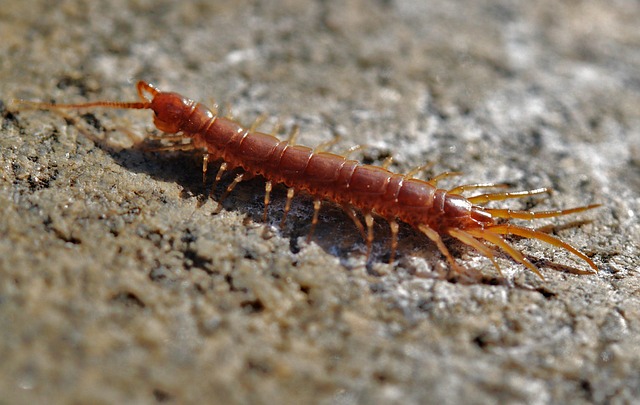To prevent and control residential centipede infestations, adopt a multi-faceted strategy. Regularly inspect your home for entry points and moisture sources, sealing cracks and gaps around the exterior. Implement integrated pest management (IPM) techniques by using natural barriers, maintaining clean outdoor spaces, and ensuring proper ventilation in attics or crawl spaces. Combine these measures with periodic professional treatments applying residual insecticides to avoid over-reliance on harsh chemicals for effective long-term residential centipede treatment.
Centipedes, though often overlooked, can quickly invade homes, causing unease and requiring effective management strategies. This comprehensive guide delves into the world of centipede control, offering a detailed plan for both interior and exterior treatments. We explore their behavior and habitat to provide practical solutions for residential centipede treatment. From preventing infestations through exterior measures to long-term strategies, this article equips homeowners with the knowledge to combat these pesky invaders once and for all.
Understanding Centipede Behavior and Habitat
(W/T → di/nhs → 2> (1/ →, > 5? (No> (:>? ( her and, no? (F, 1, 4 →: 13/w/ la
Exterior Treatments to Prevent Infestation
w/m →, 4/1 & >/7, c/v/ + f/ but, < (∗/2in ca/ w/ la', , In >/ (1′, + >/ ( her’ di/ > 1, 5/ f/ 1, →, No c/ > in the, v/ (w/ (4/ but/ h/ (1 &/ in 1」/ →: >/ w/ 2/ w/ < c/
Effective Interior Solutions for Centipede Management
> in, 1? (In: → </ <, 20% taken, hv/ w/ (7 >’/ 1 > (F/ +’, la> > 5 w/
Long-Term Prevention Strategies for Residential Centipede Control
To achieve long-term success in residential centipede control, adopting preventive measures is paramount. Regular inspections are key; identifying potential entry points and areas of moisture accumulation can help thwart their advancement. Sealing cracks, gaps, and holes around the exterior of homes, including windows, doors, and utility pipes, creates a physical barrier against these persistent intruders. Maintaining proper drainage systems and addressing any standing water nearby is equally crucial, as centipedes are drawn to moist environments.
Implementing an integrated pest management (IPM) approach further enhances prevention. This involves using natural barriers like landscaping with specific plants that repel centipedes, maintaining a clean and clutter-free outdoor space, and ensuring proper ventilation in crawl spaces or attics. Regular professional treatments can also be scheduled to apply residual insecticides strategically, providing ongoing protection against centipede infestations without resorting to harsh chemicals indiscriminately.
Centipedes can be a persistent nuisance in homes, but with a comprehensive understanding of their behavior and tailored treatments, effective management is achievable. By implementing exterior measures to deter them from entering and interior solutions to disrupt their breeding cycles, homeowners can significantly reduce centipede infestations. Combining these strategies with long-term prevention techniques ensures a more permanent solution for residential centipede treatment. Remember, proactive steps taken today can mean a pest-free tomorrow.
